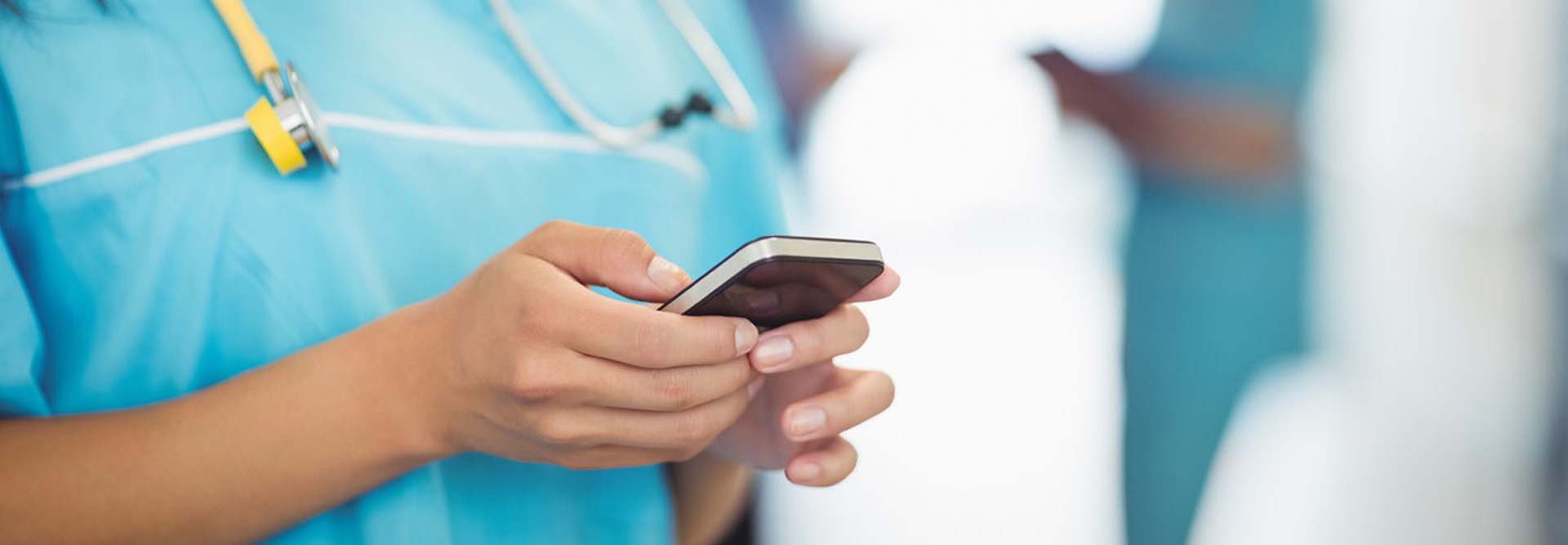Mobility Solutions Revolutionize Nursing at the Point of Care
The last two years have seen a marked upsurge in hospital-provided smartphones for nursing staff, according to a survey of IT and healthcare professionals conducted by Gregg Malkary, managing director at Spyglass Consulting Group, which advises providers on mobile health issues and adoption.
This upsurge coincides with nurses becoming increasingly dissatisfied with old technology, such as landline phones, pagers and Voice over Internet Protocol pagers. While nurses have been using personal smartphones at work for several years, the potential for security breaches — e.g., through weak passwords, exposed text messaging and clinicians relaying phone images of X-rays to colleagues — has prompted hospitals to establish secure smartphone network platforms that incorporate voice, text messaging and video.
Not only do the network-linked smartphones create cost-saving efficiencies, such as enabling clinicians to access or input data without resorting to terminals, they also perform functions that include reading barcodes and collecting vital-signs data.
“Mobility is definitely changing nursing at point of care,” Malkary asserts. “It’s driving the triple lane: reducing healthcare costs, improving care quality and outcomes, and increasing patient and provider satisfaction.”
Taking Smartphones in Healthcare Enterprisewide
Malkary estimates that about 25 percent of U.S. hospitals own such advanced communications systems at some level of integration. Nurses were the first line of penetration, but as other hospital workers saw how the technology increased nurses’ efficiency and productivity, it scaled.
“These deployments started expanding throughout the hospital, to licensed degree nurses, nursing administrators and ancillary health professionals,” observes Malkary.
Increasing Text Message Functionality in mHealth
More sophisticated and secure text messaging facilitates communication between nurses and attending physicians. Specifically, Lahey Health, a multihospital network in northeastern Massachusetts, has implemented an interoperability platform with its Epic electronic health record (EHR) system for that purpose. The hospital uses the intelligent application to let caregivers send secure text messages to one another. “And it’s not just text messaging, but a particular kind of text messaging that really didn’t exist in the industry to any great extent,” says David Reis, senior vice president and chief information officer at Lahey.
The application has allowed nurses to communicate directly in real time with attending physicians via Android and iOS smartphones, rather than resort to a central operator page and wait for a doctor. Previously, nurses would have to look up the role of the desired team member, but now the integration of the EHR and text messaging platform means they need only know the patient’s name. Among other benefits, the technology ensures a seamless flow of care across work shifts.
A similar solution, TigerText, is also seeing results in streamlining communications for healthcare providers by integrating with critical hospital systems such as the EHR, nurse call systemand scheduling tools. Through its line of clinical communication tools, TigerText helps doctors and clinicians to better collaborate, opening up time that allows doctors to see an average of 15 more patients per shift. Moreover, the tech cuts down a patient’s length of stay by 24 percent and drops readmission rates by 66 percent, according to the company.
“Healthcare workers in the U.S. waste countless hours each year focusing on data entry and outdated forms of communication,” Brad Brooks, co-founder and CEO of TigerText notes in a recent statement. The workflow solution is “built to be the central hub for care teams, thus truly enabling the last mile of care. Optimizing communication at the point of care frees physicians and nurses to do what they love — take care of patients.”
TigerText is in line with the kinds of next-generation developments that Reis sees moving nurses away from the so-called “workstation on wheels” — and the need to wear or carry cumbersome radios, tool belts, barcode scanners and tablets — toward more direct, smart device-based care.
A case in point: the telehealth concepts that Lahey is piloting, where iPads and iPhones are integrated with Epic and videoconferencing software to “deliver a real-time critical care consult over a smart device,” Reis notes.
IT Challenges to Digital Health Adoption Remain
In providing mobility to speed up, simplify and streamline nursing workflows, solutions providers must solve the problem of interoperability between devices. Dr. Farzan Sasangohar, assistant professor in Texas A&M University’s Department of Industrial and Systems Engineer, and his team are doing it by designing a microcontroller computer that links all of the devices within the entire mobility infrastructure system.
“Otherwise, if you have bits and pieces here and there that don’t integrate and don’t work with each other properly, you’re going to add to people's workload,” he warns. “That results in increased perceived complexity, which is the No. 1 enemy.”
Getting the right data on the right patient is another IT mobility challenge, as there are “tremendous issues with verification of patient identification and records,” says Dr. Marcie Stoshak-Chavez, national healthcare clinical lead at Centric Consulting, who sees development of a unique patient identifier as a boon that “would assure that each patient’s records were uniquely theirs and allow collection from any source that could share data.”
With the growing emphasis on value-based care, the role of mobile-device technology will only increase in the future.
“We have to improve our ability to communicate, collaborate and coordinate care across the care continuum,” Malkary insists. “That would also help us figure out how to do population health.”









